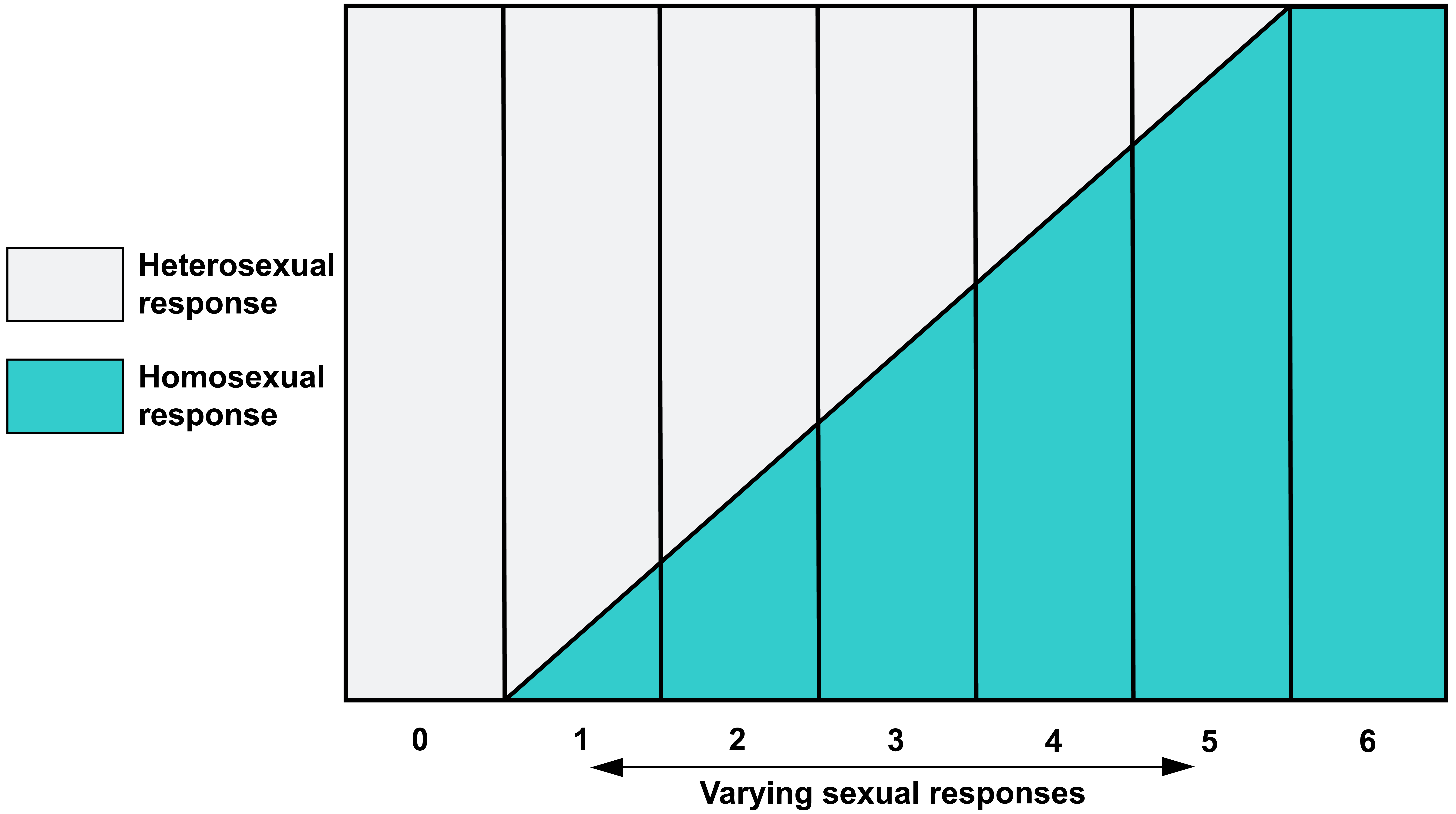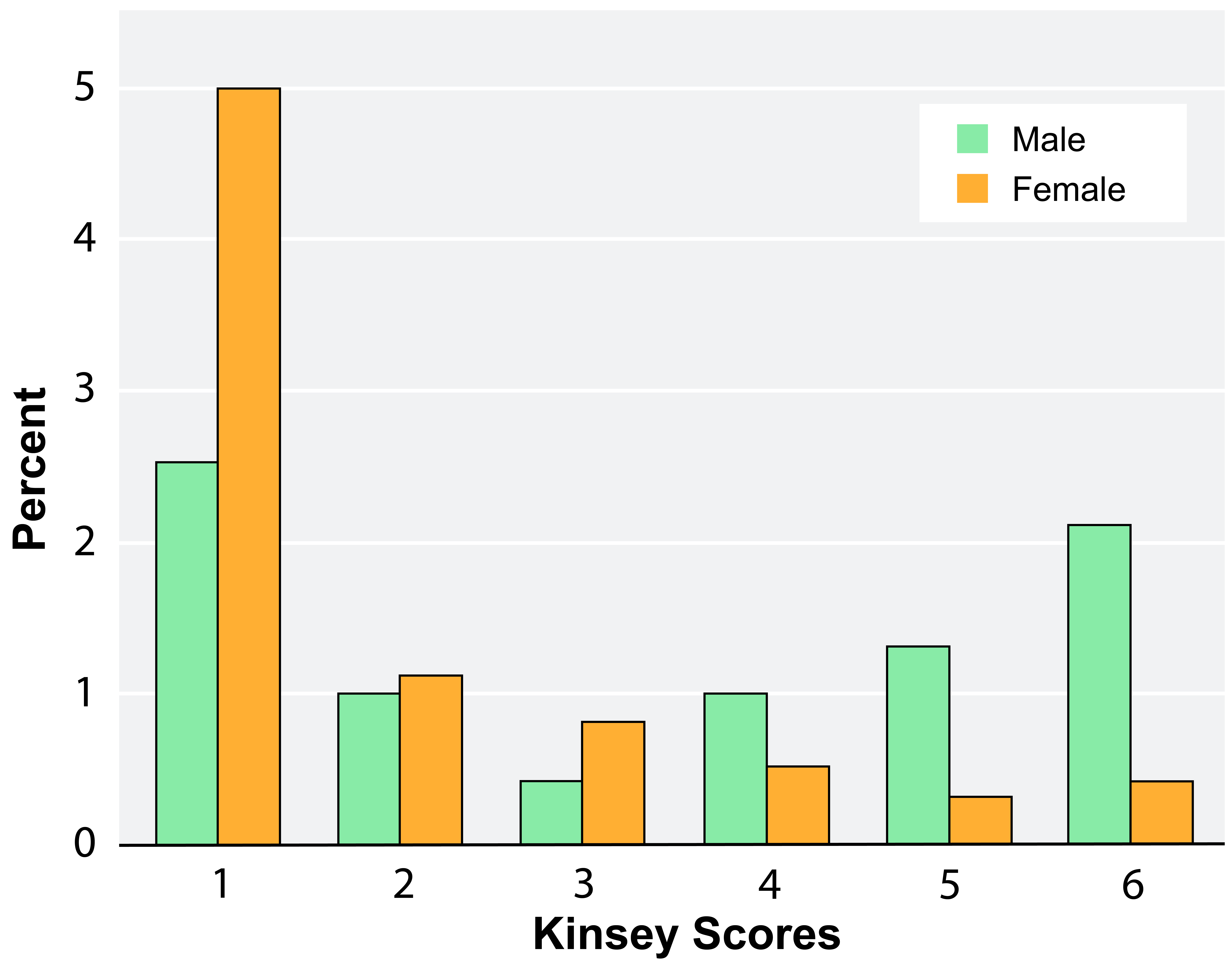12.3 Sexual preference is not binary
You may have heard things like “most people are bisexual,” and “sexual preferences exist on a continuum,” but are such claims scientific? That is, do we have evidence to justify such statements?

Some key work on sexuality was conducted in the 1940’s and 1950’s by the biologist Alfred Kinsey. Alfred Kinsey pioneered research in human sexuality through thousands of interviews and the development of “The Kinsey Scale” of human sexual preferences. The Kinsey Scale is a 7-point metric that categorizes individuals from 0 (exclusively heterosexual) to 6 (exclusively homosexual), and includes the midpoint 3 (equally homosexual and heterosexual).

Kinsey’s main contributions were to (1) reveal that many people have preferences that aren’t “0” or “6”—in other words, sexual preferences do exist on a continuum; and (2) revolutionize how we view female sexuality—that is, women are not just recipients of sex, women have sexual desires, and women cheat, fantasize, and masturbate. For many people, these ideas may be obvious, but at the time they were shocking and revolutionary.

More recent work has investigated the “continuum” concept of sexuality, with a focus on the prevalence of bisexuality. For example, an analysis of several reports revealed the presence of bisexuality in from ~2% to ~6% of individuals who identified as heterosexual, and from ~18% to ~88% in self-identified homosexuals. In the latter example, far more women, on average, expressed bisexual tendencies than did male homosexuals. In sum, bisexuality is fairly common, and sexual preference is not binary.
Diamond, L. M. Sexual Fluidity in Male and Females. Curr. Sex. Heal. Reports 8, 249–256 (2016).
Read More
- “Biography” feature on Alfred Kinsey: https://www.biography.com/video/alfred-kinsey-full-episode-2071931808
- Learn more about Alfred Kinsey at The Kinsey Institute: https://kinseyinstitute.org/about/history/alfred-kinsey.php
Check Yourself
- From Bailey, J. M. & Martin, N. A. Genetics and Environmental Influences on Sexual Orientation and Its Correlates in an Australian Twin Sample. (2000). doi:10.1037/0022-3514.78.3.524 ↵

